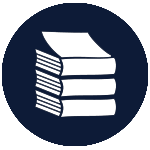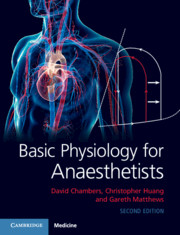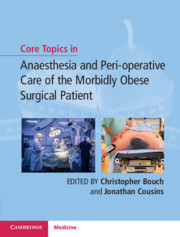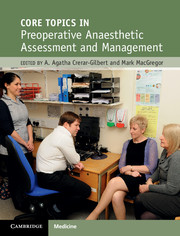
How to access e-books
 Use your ANZCA college ID (or staff username) and password to access library e-resources.
Use your ANZCA college ID (or staff username) and password to access library e-resources.
 Having trouble logging into e-resources? Try emptying your browser cache, closing and reopening your browser and trying again.
Having trouble logging into e-resources? Try emptying your browser cache, closing and reopening your browser and trying again.
 Forgotten your ANZCA password? Try resetting your password using the "Forgot Password?" link and/or messaging the "Technical support" via the college contact form
Forgotten your ANZCA password? Try resetting your password using the "Forgot Password?" link and/or messaging the "Technical support" via the college contact form
 Can't find your book online? Borrow a print copy or request a chapter via our article request service
Can't find your book online? Borrow a print copy or request a chapter via our article request service
 Experiencing difficulties, or need help accessing e-books? Contact the Library
Experiencing difficulties, or need help accessing e-books? Contact the Library
 For further information about searching and accessing e-books, see the E-books guide
For further information about searching and accessing e-books, see the E-books guide
Borrowing books
 ANZCA library provides access to a large range of print items, specialising in anaesthesia and pain medicine-related titles.
ANZCA library provides access to a large range of print items, specialising in anaesthesia and pain medicine-related titles.
 For further information about requesting books, see the Borrowing books page
For further information about requesting books, see the Borrowing books page
A list of core/commonly used anaesthesia texts.
 Basic Physiology for Anaesthetists, 2e
by
Every trainee in anaesthesia requires a thorough understanding of basic physiology and its application to clinical practice. Now in its second edition, this comprehensively illustrated textbook bridges the gap between medical school and reference scientific texts. It covers the physiology requirements of the Primary FRCA examination syllabus.
Basic Physiology for Anaesthetists, 2e
by
Every trainee in anaesthesia requires a thorough understanding of basic physiology and its application to clinical practice. Now in its second edition, this comprehensively illustrated textbook bridges the gap between medical school and reference scientific texts. It covers the physiology requirements of the Primary FRCA examination syllabus.
 Miller's Anesthesia, 10e
by
***Highly Recommended*** Offering up-to-date coverage of everything from historical and international perspectives to basic science and today’s clinical practice, Miller's Anesthesia 10e, remains the #1 reference and trusted learning resource for practitioners and trainees in this complex field. Dr. Michael Gropper leads a team of expert editors and contributing authors who provide current information on the technical, scientific, and clinical issues you face each day—whether you’re managing a challenging patient care situation, preparing for the boards, or studying for recertification.
Miller's Anesthesia, 10e
by
***Highly Recommended*** Offering up-to-date coverage of everything from historical and international perspectives to basic science and today’s clinical practice, Miller's Anesthesia 10e, remains the #1 reference and trusted learning resource for practitioners and trainees in this complex field. Dr. Michael Gropper leads a team of expert editors and contributing authors who provide current information on the technical, scientific, and clinical issues you face each day—whether you’re managing a challenging patient care situation, preparing for the boards, or studying for recertification.
 Stoelting's Pharmacology and Physiology in Anesthetic Practice, 6e
by
Stoelting's Pharmacology and Physiology in Anesthetic Practice, 6e
by
 Anaesthesia: Illustrated Clinical Cases
by
Containing 220 challenging clinical cases and illustrated with superb, high-quality images, this book covers a wide range of anaesthesia-related questions and answers from straightforward cases through to more challenging presentations. It is an invaluable text for anaesthesia professionals in practice and in training.
Anaesthesia: Illustrated Clinical Cases
by
Containing 220 challenging clinical cases and illustrated with superb, high-quality images, this book covers a wide range of anaesthesia-related questions and answers from straightforward cases through to more challenging presentations. It is an invaluable text for anaesthesia professionals in practice and in training.
 Anaesthetic Crisis Handbook
by
This resource is for educational purposes as well as improving patient safety. It is aimed at a New Zealand audience and a resource for hospitals and staff local to my region to be able to access the resource.
Anaesthetic Crisis Handbook
by
This resource is for educational purposes as well as improving patient safety. It is aimed at a New Zealand audience and a resource for hospitals and staff local to my region to be able to access the resource.
 Anaesthetics for Junior Doctors and Allied Professionals: The Essential Guide
by
This book provides the basic background and ground rules for how anaesthetists work, how they approach a problem and how one can prepare for it. Some of the initial chapters could be usefully read by all surgeons, especially those in Foundation Training posts, and medical students considering an anaesthetic or intensive placement. The use of lists, key points and limited use of references help make the book easy to read, or dip into between cases, and keep it a manageable size whilst still providing a mine of information for the target audience.
Anaesthetics for Junior Doctors and Allied Professionals: The Essential Guide
by
This book provides the basic background and ground rules for how anaesthetists work, how they approach a problem and how one can prepare for it. Some of the initial chapters could be usefully read by all surgeons, especially those in Foundation Training posts, and medical students considering an anaesthetic or intensive placement. The use of lists, key points and limited use of references help make the book easy to read, or dip into between cases, and keep it a manageable size whilst still providing a mine of information for the target audience.
 Australasian Anaesthesia 2025
by
Australasian Anaesthesia 2025
by
 Basic Physiology for Anaesthetists, 2e
by
Every trainee in anaesthesia requires a thorough understanding of basic physiology and its application to clinical practice. Now in its second edition, this comprehensively illustrated textbook bridges the gap between medical school and reference scientific texts. It covers the physiology requirements of the Primary FRCA examination syllabus.
Basic Physiology for Anaesthetists, 2e
by
Every trainee in anaesthesia requires a thorough understanding of basic physiology and its application to clinical practice. Now in its second edition, this comprehensively illustrated textbook bridges the gap between medical school and reference scientific texts. It covers the physiology requirements of the Primary FRCA examination syllabus.
 The Basics of Anesthesiology : A Primer for Medical Students
by
The Basics of Anesthesiology : A Primer for Medical Students
by
 The Chloroformist
by
Until 1846, surgery was performed without anaesthesia: extraordinary operations, carried out on conscious, terrified patients. Surgeons of that era were bold and courageous and saved many lives, but anaesthesia changed everything. With an unconscious patient, the surgeon could take his time. Surgery became slower, more careful and more delicate. And as anaesthesia removed the pain of surgery, the medical world gave more attention to surgical infection, heralding in the use of antiseptics and eventually aseptic surgery.
The Chloroformist
by
Until 1846, surgery was performed without anaesthesia: extraordinary operations, carried out on conscious, terrified patients. Surgeons of that era were bold and courageous and saved many lives, but anaesthesia changed everything. With an unconscious patient, the surgeon could take his time. Surgery became slower, more careful and more delicate. And as anaesthesia removed the pain of surgery, the medical world gave more attention to surgical infection, heralding in the use of antiseptics and eventually aseptic surgery.
 Clinical Manual and Review of Transesophageal Echocardiography, 3e
by
Clinical Manual and Review of Transesophageal Echocardiography, 3e is written to be the field's go-to resource and the standard reference textbook on the topic. It offers concise yet comprehensive coverage of the key principles, concepts, and developing practice of transesophageal echocardiography. Completely updated, reorganized, and expanded, this Third Edition features a sectional format, each containing chapters that were reviewed and revised to provide a comprehensive discussion of physiology, pathophysiology, and echocardiographic approach for normal and common disease states. Where possible, important clinical information has been aligned with the principles of cardiovascular physiology and echocardiographic techniques.
Clinical Manual and Review of Transesophageal Echocardiography, 3e
by
Clinical Manual and Review of Transesophageal Echocardiography, 3e is written to be the field's go-to resource and the standard reference textbook on the topic. It offers concise yet comprehensive coverage of the key principles, concepts, and developing practice of transesophageal echocardiography. Completely updated, reorganized, and expanded, this Third Edition features a sectional format, each containing chapters that were reviewed and revised to provide a comprehensive discussion of physiology, pathophysiology, and echocardiographic approach for normal and common disease states. Where possible, important clinical information has been aligned with the principles of cardiovascular physiology and echocardiographic techniques.
 Core Topics in Anaesthesia and Peri-Operative Care of the Morbidly Obese Surgical Patient
by
An essential read for healthcare providers across all disciplines, this book is a comprehensive guide to the perioperative management of the obese patient. Providing practical guidance on specific aspects of physiology, pharmacology and anaesthetic technique, it addresses the increasing prevalence of obese patients in both elective and emergency settings and the need for a definitive text on the perioperative care for these patients.
Core Topics in Anaesthesia and Peri-Operative Care of the Morbidly Obese Surgical Patient
by
An essential read for healthcare providers across all disciplines, this book is a comprehensive guide to the perioperative management of the obese patient. Providing practical guidance on specific aspects of physiology, pharmacology and anaesthetic technique, it addresses the increasing prevalence of obese patients in both elective and emergency settings and the need for a definitive text on the perioperative care for these patients.
 Core Topics in Preoperative Anaesthetic Assessment and Management
by
Part of the popular Core Topics series, this book provides a practical guide to pre-operative assessment for consultants and trainee anaesthetists. Chapters cover comprehensive evidence-based guidance for assessing and managing patients with particular conditions, as well as perioperative risk stratification and challenges of pre-assessment.
Core Topics in Preoperative Anaesthetic Assessment and Management
by
Part of the popular Core Topics series, this book provides a practical guide to pre-operative assessment for consultants and trainee anaesthetists. Chapters cover comprehensive evidence-based guidance for assessing and managing patients with particular conditions, as well as perioperative risk stratification and challenges of pre-assessment.
 Good Medical Practice: A Code of Conduct for Doctors in Australia
by
Good medical practice (the code) describes what is expected of all doctors registered to practise medicine in Australia. It sets out the principles that characterise good medical practice and makes explicit the standards of ethical and professional conduct expected of doctors by their professional peers and the community.
Good Medical Practice: A Code of Conduct for Doctors in Australia
by
Good medical practice (the code) describes what is expected of all doctors registered to practise medicine in Australia. It sets out the principles that characterise good medical practice and makes explicit the standards of ethical and professional conduct expected of doctors by their professional peers and the community.
 Harrison's Principles of Internal Medicine, 22e
by
Fully updated, Harrison's 22e has been modified extensively in its structure and content and offers a standardized format for each disease chapter. The authors and editors have curated and synthesized the vast amount of information that comprises general internal medicine and each of the major specialties into a highly readable and informative resource. This twenty-second edition features: Updated content that reflects new approved therapeutics and new practice-changing guidelines and evidence summaries; More than 3,000, clinical, pathological, and radiographic photographs, diagnostic and therapeutic decision trees, and clear schematics and diagrams describing pathophysiologic processes; Numerous atlases featuring curated collections of important visual aspects of diagnosis and management; Brand new chapters, including The Value of the Physical Examination in Modern Medicine, Physician Well-Being, Exercise Intolerance, Primary and Secondary Hemophagocytic Lymphohistiocytosis, Symptom Control in Patients with Cancer, Principles of Immunization, COVID and Other Coronavirus Infections, Desensitization, Point-of-Care Ultrasound, Placebo and Nocebo Effects, Bedside Examination Tests in the Patient with Low Back Pain, and Antithrombotic Therapy in Adult Patients.
Harrison's Principles of Internal Medicine, 22e
by
Fully updated, Harrison's 22e has been modified extensively in its structure and content and offers a standardized format for each disease chapter. The authors and editors have curated and synthesized the vast amount of information that comprises general internal medicine and each of the major specialties into a highly readable and informative resource. This twenty-second edition features: Updated content that reflects new approved therapeutics and new practice-changing guidelines and evidence summaries; More than 3,000, clinical, pathological, and radiographic photographs, diagnostic and therapeutic decision trees, and clear schematics and diagrams describing pathophysiologic processes; Numerous atlases featuring curated collections of important visual aspects of diagnosis and management; Brand new chapters, including The Value of the Physical Examination in Modern Medicine, Physician Well-Being, Exercise Intolerance, Primary and Secondary Hemophagocytic Lymphohistiocytosis, Symptom Control in Patients with Cancer, Principles of Immunization, COVID and Other Coronavirus Infections, Desensitization, Point-of-Care Ultrasound, Placebo and Nocebo Effects, Bedside Examination Tests in the Patient with Low Back Pain, and Antithrombotic Therapy in Adult Patients.
 Katzung's Pharmacology: Examination & Board Review, 14e
by
Katzung’s Pharmacology Exam and Board Review covers all current drugs and antiretrovirals, immunologic agents, and chemotherapies. Edited by the world leading figures in pharmacology and medicine, the high-yield text focuses on basic principles, autonomic drugs, cardiovascular-renal drugs, and drugs with actions on smooth muscle, central nervous system drugs, and drugs used to treat chemotherapeutic drugs, and toxicology.
This authoritative resource delivers a clear, concise review of fundamental concepts backed by more than 1,000 review questions and answers. With fully up-to-date content, the chapter-based approach facilitates use with course notes or larger texts.
Katzung's Pharmacology: Examination & Board Review, 14e
by
Katzung’s Pharmacology Exam and Board Review covers all current drugs and antiretrovirals, immunologic agents, and chemotherapies. Edited by the world leading figures in pharmacology and medicine, the high-yield text focuses on basic principles, autonomic drugs, cardiovascular-renal drugs, and drugs with actions on smooth muscle, central nervous system drugs, and drugs used to treat chemotherapeutic drugs, and toxicology.
This authoritative resource delivers a clear, concise review of fundamental concepts backed by more than 1,000 review questions and answers. With fully up-to-date content, the chapter-based approach facilitates use with course notes or larger texts.
 Medication Safety during Anesthesia and the Perioperative Period
by
With medication errors in healthcare an internationally recognised problem, this much-needed book delivers a comprehensive approach to understanding medication safety in the perioperative period. It reviews what medication adverse events are, and how often and where these errors occur, as well as exploring human cognitive psychology and explaining why things can go wrong at any time in a complex system.
Medication Safety during Anesthesia and the Perioperative Period
by
With medication errors in healthcare an internationally recognised problem, this much-needed book delivers a comprehensive approach to understanding medication safety in the perioperative period. It reviews what medication adverse events are, and how often and where these errors occur, as well as exploring human cognitive psychology and explaining why things can go wrong at any time in a complex system.
 Miller's Anesthesia, 10e
by
***Highly Recommended*** Offering up-to-date coverage of everything from historical and international perspectives to basic science and today’s clinical practice, Miller's Anesthesia 10e, remains the #1 reference and trusted learning resource for practitioners and trainees in this complex field. Dr. Michael Gropper leads a team of expert editors and contributing authors who provide current information on the technical, scientific, and clinical issues you face each day—whether you’re managing a challenging patient care situation, preparing for the boards, or studying for recertification.
Miller's Anesthesia, 10e
by
***Highly Recommended*** Offering up-to-date coverage of everything from historical and international perspectives to basic science and today’s clinical practice, Miller's Anesthesia 10e, remains the #1 reference and trusted learning resource for practitioners and trainees in this complex field. Dr. Michael Gropper leads a team of expert editors and contributing authors who provide current information on the technical, scientific, and clinical issues you face each day—whether you’re managing a challenging patient care situation, preparing for the boards, or studying for recertification.
 Physics, Pharmacology and Physiology for Anaesthetists: Key Concepts for the FRCA, 2e
by
A key requirement of the primary and final FRCA examinations is a sound understanding of the basic sciences behind anaesthetic practice. It is important to be able to describe these principles clearly, particularly in the viva section of the examinations. Featuring several new topics, this fully updated new edition provides all the important graphs, definitions and equations which may be covered in the examinations.
Physics, Pharmacology and Physiology for Anaesthetists: Key Concepts for the FRCA, 2e
by
A key requirement of the primary and final FRCA examinations is a sound understanding of the basic sciences behind anaesthetic practice. It is important to be able to describe these principles clearly, particularly in the viva section of the examinations. Featuring several new topics, this fully updated new edition provides all the important graphs, definitions and equations which may be covered in the examinations.
 Safety of Anaesthesia: A Review of Anaesthesia-related Mortality Reporting in Australia and New Zealand 2015-2017
by
Safety of Anaesthesia: A Review of Anaesthesia-related Mortality Reporting in Australia and New Zealand 2015-2017
by
 Stoelting's Pharmacology and Physiology in Anesthetic Practice, 6e
by
Stoelting's Pharmacology and Physiology in Anesthetic Practice, 6e
by
 Taking on TIVA: Debunking Myths and Dispelling Misunderstandings
by
"We have a geographically diverse collection of authors who have helped us to present the most important topics in TIVA in a clear and easily readable style. Our vision is to empower readers to start or continue using this technique. Ideally this should be in young, healthy patients undergoing relatively straightforward surgery without the use of muscle relaxants"-- Provided by publisher.
Taking on TIVA: Debunking Myths and Dispelling Misunderstandings
by
"We have a geographically diverse collection of authors who have helped us to present the most important topics in TIVA in a clear and easily readable style. Our vision is to empower readers to start or continue using this technique. Ideally this should be in young, healthy patients undergoing relatively straightforward surgery without the use of muscle relaxants"-- Provided by publisher.
 Talley & O'Connor's Clinical Examination
by
Talley and O'Connor's Clinical Examination addresses the core principles and clinical skills that underpin diagnosis for safe, effective medical practice. The text takes an evidence-based, patient-centric approach to conducting a clinical examination.
Talley & O'Connor's Clinical Examination
by
Talley and O'Connor's Clinical Examination addresses the core principles and clinical skills that underpin diagnosis for safe, effective medical practice. The text takes an evidence-based, patient-centric approach to conducting a clinical examination.
 Ultrasound for the Generalist: A Guide to Point of Care Imaging
by
This essential guide caters for all generalist clinicians beginning their ultrasound journey and extends to more advanced assessments for those with established ultrasound experience wishing to advance their knowledge and skills. It covers a wide range of ultrasound topics from echocardiography, thoracic and COVID-19 to emerging areas such as palliative care, hospital at home and remote and austere medicine.
Ultrasound for the Generalist: A Guide to Point of Care Imaging
by
This essential guide caters for all generalist clinicians beginning their ultrasound journey and extends to more advanced assessments for those with established ultrasound experience wishing to advance their knowledge and skills. It covers a wide range of ultrasound topics from echocardiography, thoracic and COVID-19 to emerging areas such as palliative care, hospital at home and remote and austere medicine.
 The ANZCA Primary Exam Companion
by
This book addresses all components of the anaesthetics primary exam with a focus on the vivas. Exam resources, exam technique, diagrams, opening viva questions, practice SAQs, a study template and 500 short format questions and answers that traverse the entire curriculum are contained within this book.
The ANZCA Primary Exam Companion
by
This book addresses all components of the anaesthetics primary exam with a focus on the vivas. Exam resources, exam technique, diagrams, opening viva questions, practice SAQs, a study template and 500 short format questions and answers that traverse the entire curriculum are contained within this book.
 Australasian Anaesthesia 2025
by
Australasian Anaesthesia 2025
by
 The First Year: What You Should Know After a Year of Anaesthesia Training (Revised Edition)
by
Recommended
This book is not an exam primer nor is it a comprehensive textbook of anaesthesia. This is the book you give to the trainee specialist who is about to embark on their anaesthesia training. It contains the information they need to formulate and develop a safe practice of anaesthesia. This book lucidly describes and justifies the core knowledge, behaviours and practical skills that a junior trainee would be expected to possess after a year of anaesthesia. Written specifically for Australasian specialist anaesthetic trainees and those doing the Rural Generalist Anaesthesia (RGA) training course, this book fills the gaping hole in the existing anaesthetic literature. The curriculum for the Introductory Training period and the RGA is comprehensively addressed in this book.
The First Year: What You Should Know After a Year of Anaesthesia Training (Revised Edition)
by
Recommended
This book is not an exam primer nor is it a comprehensive textbook of anaesthesia. This is the book you give to the trainee specialist who is about to embark on their anaesthesia training. It contains the information they need to formulate and develop a safe practice of anaesthesia. This book lucidly describes and justifies the core knowledge, behaviours and practical skills that a junior trainee would be expected to possess after a year of anaesthesia. Written specifically for Australasian specialist anaesthetic trainees and those doing the Rural Generalist Anaesthesia (RGA) training course, this book fills the gaping hole in the existing anaesthetic literature. The curriculum for the Introductory Training period and the RGA is comprehensively addressed in this book.
 Stoelting's Pharmacology and Physiology in Anesthetic Practice, 6e
by
Stoelting's Pharmacology and Physiology in Anesthetic Practice, 6e
by
 Taking on TIVA: Debunking Myths and Dispelling Misunderstandings
by
"We have a geographically diverse collection of authors who have helped us to present the most important topics in TIVA in a clear and easily readable style. Our vision is to empower readers to start or continue using this technique. Ideally this should be in young, healthy patients undergoing relatively straightforward surgery without the use of muscle relaxants"-- Provided by publisher.
Taking on TIVA: Debunking Myths and Dispelling Misunderstandings
by
"We have a geographically diverse collection of authors who have helped us to present the most important topics in TIVA in a clear and easily readable style. Our vision is to empower readers to start or continue using this technique. Ideally this should be in young, healthy patients undergoing relatively straightforward surgery without the use of muscle relaxants"-- Provided by publisher.
 Talley & O'Connor's Clinical Examination: A Systematic Guide to Physical Diagnosis (Vols. 1 & 2), 9e
by
Talley and O'Connor's Clinical Examination addresses the core principles and clinical skills that underpin diagnosis for safe, effective medical practice. The text takes an evidence-based, patient-centric approach to conducting a clinical examination.
Talley & O'Connor's Clinical Examination: A Systematic Guide to Physical Diagnosis (Vols. 1 & 2), 9e
by
Talley and O'Connor's Clinical Examination addresses the core principles and clinical skills that underpin diagnosis for safe, effective medical practice. The text takes an evidence-based, patient-centric approach to conducting a clinical examination.












Quick links
About ANZCA
Copyright © Australian and New Zealand College of Anaesthetists.